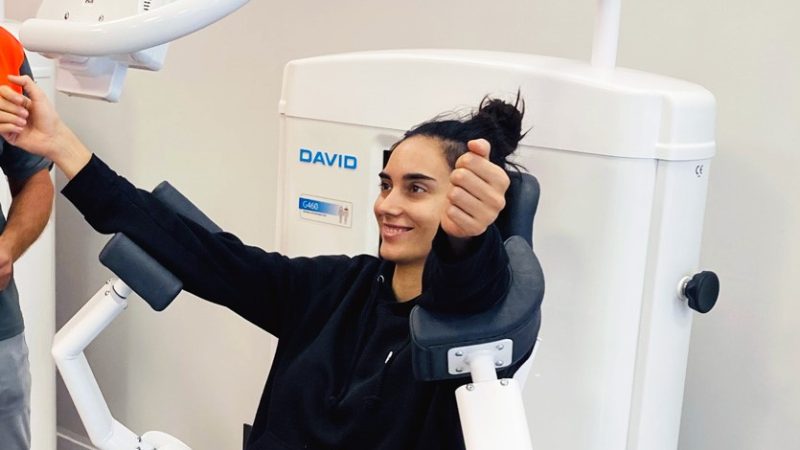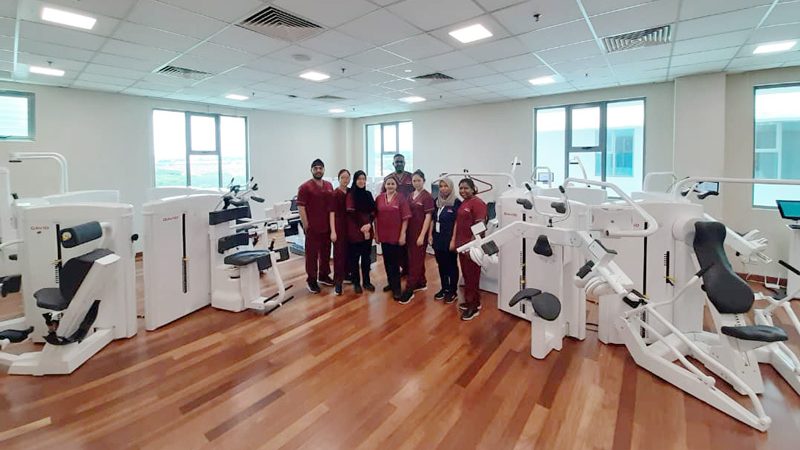1. Biomechanics
One of the main objectives of strength training and shoulder rehabilitation is to gain strength. To increase strength, the muscles should be challenged through the full range of motion (ROM). Therefore, the resistance should correspond to the strength of the involved joint motion through the whole ROM (Cabell & Zebas, 1999; Garrett et al., 1988; Kulig et al., 1984).
Progressive overload through the ROM is important for proper rehabilitation of muscle strength, yet this varies across types of resistance for a given exercise. Elastic resistance is commonly used in shoulder rehabilitation. The most common exercises performed by patients in the clinic, athletic training room, or at home are internal and external rotation exercises with the upper arm positioned down by the side in a neutral position. However, the application angle of this resistance is not usually controlled during the exercises.
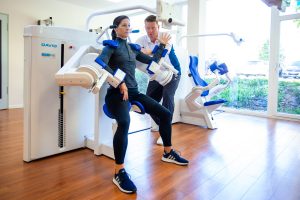
The shapes of the external rotation resistance curves for elastic bands are categorized as ascending and descending. While external rotation resistance curve is categorized as ascending it diverges immediately from the strength curve. From a clinical standpoint, exercises in the neutral shoulder position using elastic bands should not be used as a strengthening exercise for the external rotators of the shoulder. Although elastic bands provide resistance through the ROM, the resistance corresponds to the strength curve very poorly. This could create a potential injury to an individual who is going through rehabilitation. Where the individual is the weakest, the resistance is at its highest and where s/he is strongest, the resistance is at its lowest. Starting the exercise s easy because the resistance is low, but as the person externally rotates, the loading of on the muscle becomes disproportionately greater. This kind of resistance curve is ineffective and in the worse case could result in injury.
The person may stress the muscles inappropriately, which could result in further injury.
The same example holds true for an external rotation where an individual may have a rotator cuff repair. The larger muscles around the joint may be capable of performing the exercise. The rotator cuff’s role during normal joint movement is to counteract the larger muscles and prevent dislocation of the humerus. Thus, due to muscle weakness from the repair, there is a potential for injury to occur because the rotator cuff cannot counteract the larger muscles.
The shapes of the internal rotation resistance curve is ascending and the strength curve is descending. The resistance curve is not significantly different from the strength curve from 30° to 90° (0° is fully externally rotated), however, the curves differ from thereafter significantly. Thus, proper strength training for internal rotation would occur only from joint angles 30° through 90° and becomes way too high after that. For rehabilitation purposes, it appears that internal rotation exercises should avoid the latter part of the ROM. The person may not be able to perform against the resistance, which could potentially bring about more injury to the already injured individual.
An Isolated Shoulder Device suits patients suffering from prolonged (sub-acute or chronic), recurrent, post-operative, or post-traumatic shoulder problems. Problems such as poor posture, frozen shoulder, rotator cuff disorders, shoulder instability, acromioclavicular joint disorders, and osteoarthritis in the shoulder joints are also suitable for rehabilitation through Exercise Device-Based Therapy.
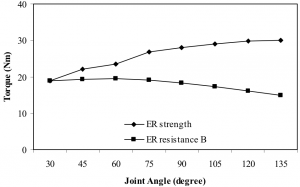 Hannah, Daniel Cason, “A Comparison of Strength and Resistance Curves for the Internal and External Rotators of the Shoulder.” (2002). Electronic Theses and Dissertations. Paper 680.
Hannah, Daniel Cason, “A Comparison of Strength and Resistance Curves for the Internal and External Rotators of the Shoulder.” (2002). Electronic Theses and Dissertations. Paper 680.
2. Functional or isolated training
What is the best kind of exercise for shoulder rehabilitation? There is an ongoing discussion about the best kind of exercise, should it be functional or isolated? With the David Shoulder Solution, internal and external rotators of the shoulder joint along with the scapular stabilizers can be activated safely and efficiently. Optimal joint angles and a supportive movement arm isolate the activation precisely to the desired muscles. Pure isolation is essential, or else stronger internal rotators, like the pectoralis major, will do most of the work. When rehabilitating sore shoulders, a carefully designed resistance curve is absolutely crucial in order to perform the exercise in a controlled manner.
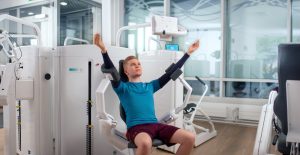 The G460 device provides isolated diagonal shoulder abduction training.
The G460 device provides isolated diagonal shoulder abduction training.
Why isolated exercises?
There is no substitute to isolated exercise at the early stages of the rehabilitation process.
Isolated exercise rehabilitation:
- Provides adequate level of intensity in a safe way
- Secures there is no cheating due to pain
- Teaches patients to automatically exercise correctly and use the right target muscles
- Allows early activation of even painful joints with high level of precision
- Will empower the patient as they learn that movements are not painful
3. The right resistance curve
When considering the right training curve for shoulder rehabilitation, it is important to consider muscle fatigue during the training sets. Here, correct loading throughout the training curve is beneficial for many reasons including joint support and safety.
Disproportionate muscle fatigue
Muscle fatigue over the range of motion is disproportionate during a set of repetitions. Fatigue phenomena is more predominant at the shortened position of the muscles.
Practical benefits of correct loading
- Patients feel that the movement is very gentle and smooth, no jerks or peaks
- Muscles are always doing the most amount of work possible, regardless of the loading level
- Exercise is safe even when the fatiguing effect is very high
- Movement is practically always pain-free when the joint is properly supported and the load is smooth
4. Medical shoulder equipment vs Fitness shoulder equipment
Why use a medical shoulder device instead of a fitness device? Most fitness equipment for the shoulder consists of a shoulder press or a pulley with cables. Although these are good exercises for people without complaints, the strain for people with shoulder problems is often too heavy. With fitness devices, it is practically impossible to train the critical rotator cuff muscles in a safe and targeted manner. The DAVID medical equipment consists of glenohumeral internal and external rotation exercise devices for the shoulder. Optimized joint angles (60° abduction and scapular plane) enable effective treatment of a painful joint.
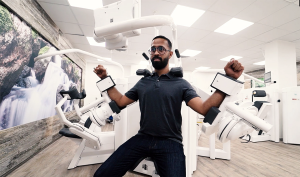
5. Shoulder Exercises should be measurable and documented
Why should we store training data for shoulder complaints?
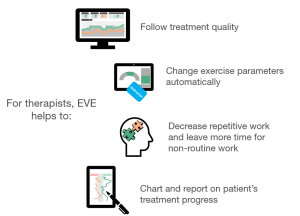
Both on an individual and group level, data is critical for continuous development.
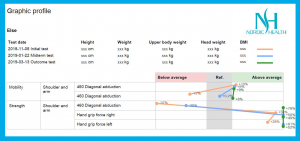
6. Quantitative vs qualitative shoulder training
What is the difference between Qualitative and Quantitative shoulder training? Very simply put, the difference can be found in the language used. In qualitative shoulder training, the language is vague and no parameter can be given a precise unit. In quantitative shoulder training, this language is defined and quantified and all training data can be digitized. Parameters such as speed and range of motion can be defined in seconds and degrees. This takes the guesswork out and allows for accuracy and precision in the shoulder training.
Qualitative shoulder training
“We want to exercise the external rotation of the shoulder”
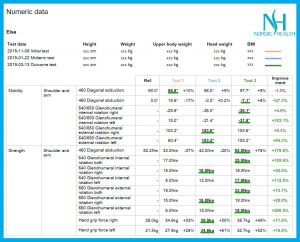
Quantitative shoulder training
We want to exercise the external shoulder rotation from -30 to 45 degrees at a speed of 37,5 degrees per second with a load of 15% from the tested 1RM for 84 seconds while the shoulder is in 60-degree abduction.
7. Guiding and motivation
Each DAVID device comes equipped with a computer terminal that guides and motivates the patients to follow exactly the given parameters prescribed in their individualized programs. Parameters include e.g. selected movements, adjustments, loading, range of motion, repetitions, movement speed, progression, session numbers and frequencies. These parameters are automatically designed and fine-tuned with the use of the cloud-based software and patients get immediate feedback on their compliance level.
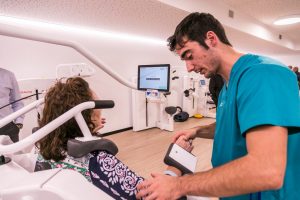
Is a Medical Device worth it in the end?
Yes. In the long-run, simple shoulder exercise equipment does not provide the quality or precision required to treat injured shoulders. A shoulder device, designed for medical rehabilitation, utilizes optimal biomechanics to provide isolated training and the right loading curve. These are key components that should be kept in mind when using or buying shoulder equipment. Furthermore, when it comes to medical equipment such as DAVID’s Shoulder Solution, data can also increase precision and accuracy of the treatment.
With the Shoulder Solution, exercises are measurable and documented, providing each component with a quantitative description. In addition, the device screen allows for real-time guidance and motivation as the patient trains injured shoulders. Keep these 7 reasons in mind when considering what shoulder device you or your patient should use.
 English
English 






















